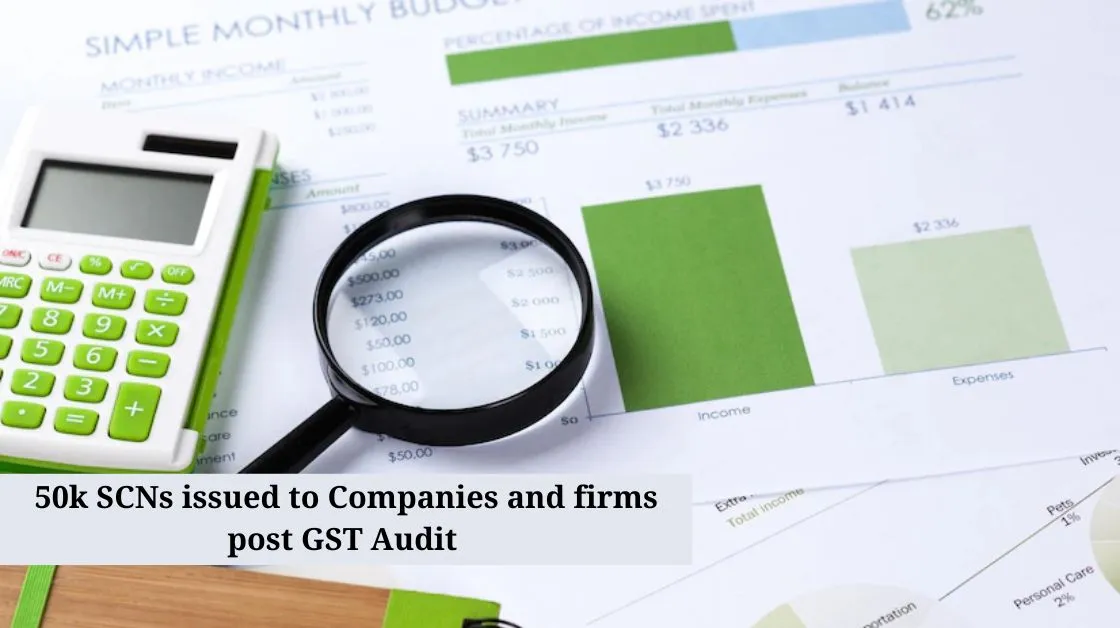


In a momentous move, the GST Department has issued around 50,000 show-cause notices (SCN) to several companies and firms across sectors, including jewelry and real estate, following the findings of a GST audit exercise they started earlier this financial year in the first comprehensive audit exercise since the inception of the GST regime.
It has covered annual GST returns filed by firms in the first 2 years of the tax regime 2017- 18 and 2018-19; in some instances, the GST audit has even covered 2019-20 and 2020-21. In December 2021, Annual GST returns for 2020-21 were filed.
The notices have been served after scrutinizing several documents during the audit under different Sections of the CGST Act, depending on the issue being discovered during the audit, said a government official privy to the development.
The notices served could be for different reasons, including misdeclaration, tax not paid, short-payment, incorrect classification, input-tax credit, goods/services, and export items, mismatch in sale and purchase of items, etc. Issues and causes vary from company to company, officials said.
“Until September, around 20,000 notices had been served to firms where inconsistencies were found. Over 30,000 notices were issued after that. The exercise is ongoing as an audit is done in three months for large businesses; sometimes it goes on for six months if there are complexities. The small businesses audit concludes in a few weeks. Such exercises are significant as they help detect irregularities and fix business issues, and improve returns,” said one of the officials cited.
The Department is learned to accordingly pick them up for having scrutinized about 100,000 auditings. GST registered accounts and there are 14 million registered GST taxpayers.
“We follow certain significant parameters for selecting cases for GST audit. At the beginning of the year, we tried to cater to evasion-prone sectors–gems real estate and jewelry, etc. We also consider inputs given by the Commissionerate of tier-1, tier- 2 cities.” explained a source. A GST audit involves visiting the business premises and inspecting documents, including audited income tax returns, financial statements, filing with the Registrar of Companies (ROC), production records, stock registers, and details of customers and suppliers.
The sources said the assessees have been asked to furnish explanations and reasons for the issues being flagged by the Department in 15-30 days. They will also have to submit certain documents sought by the authorities.
After reviewing the reasons and documents, the Department issues a final audit report with the observation. These observations typically highlight the matter and raise demand. The matter concludes if the assessee goes with the observation and pays the tax liability. In case of disagreement, the matter goes to litigation.
State GST officials, too, started their audit exercise this July amid a revenue deficit as compensation cess by the central government ended on June 30, an industry source said.
Source: Business Standard
























































Leave a Reply
Your email address will not be published. Required fields are marked *